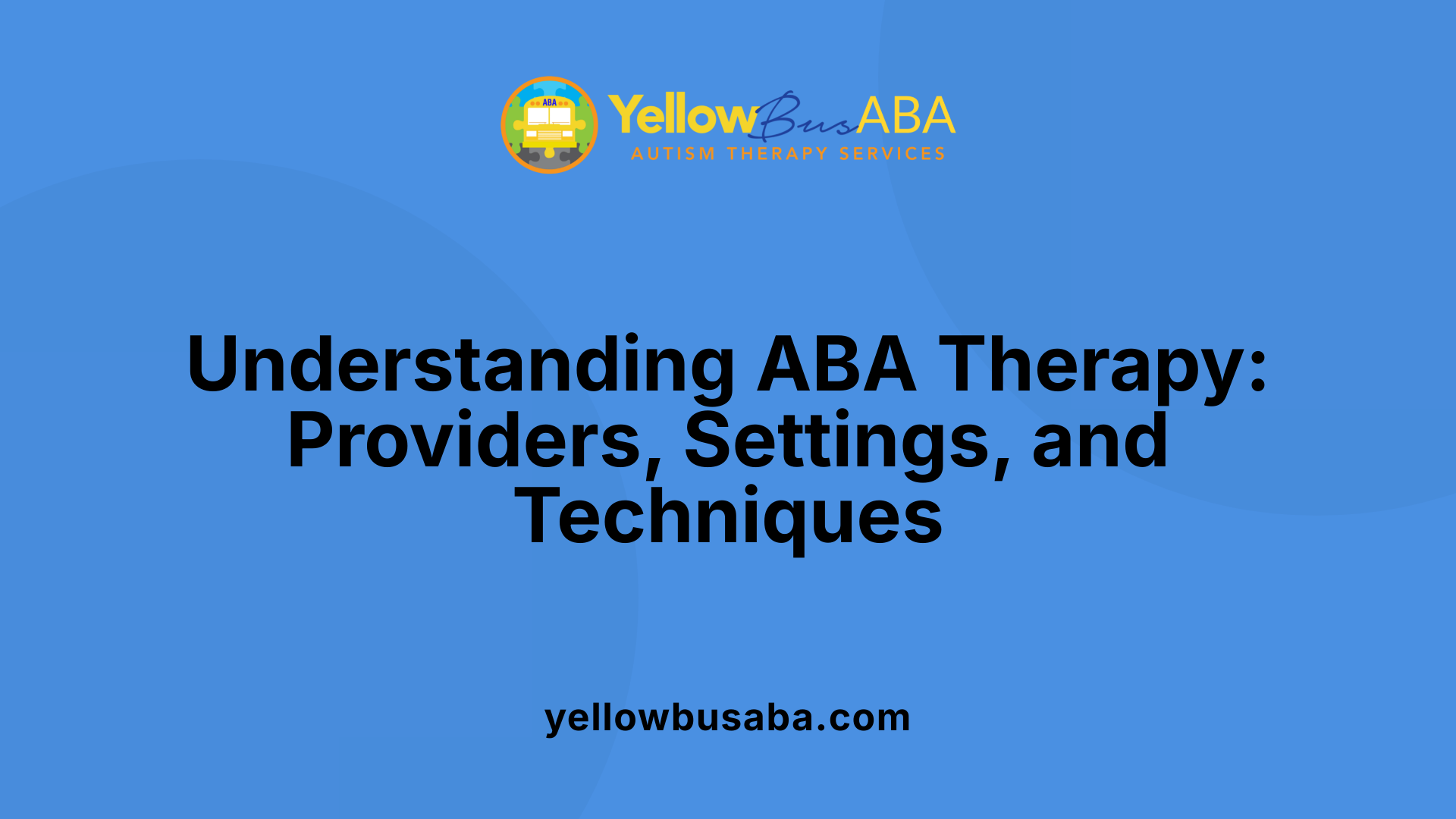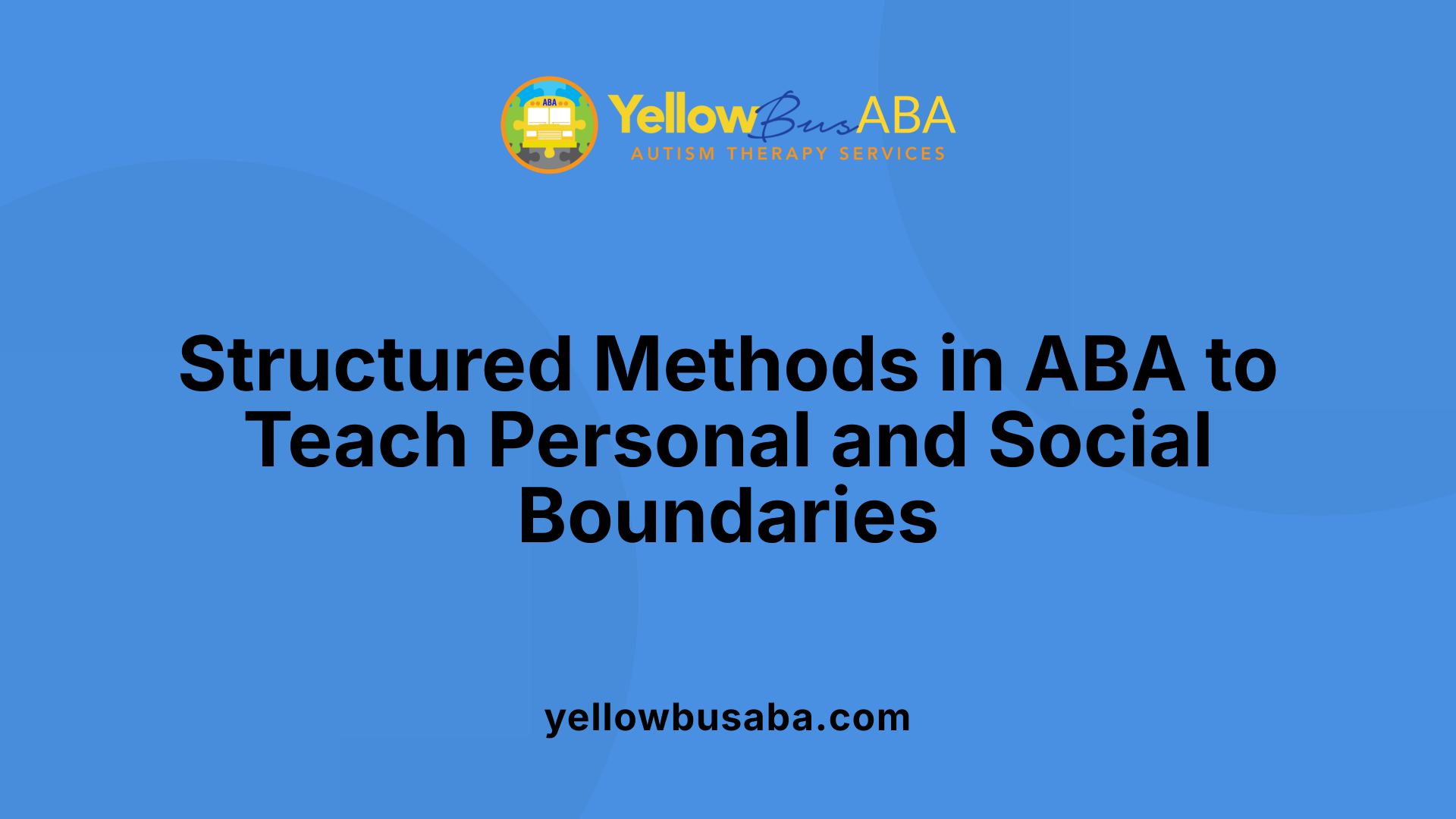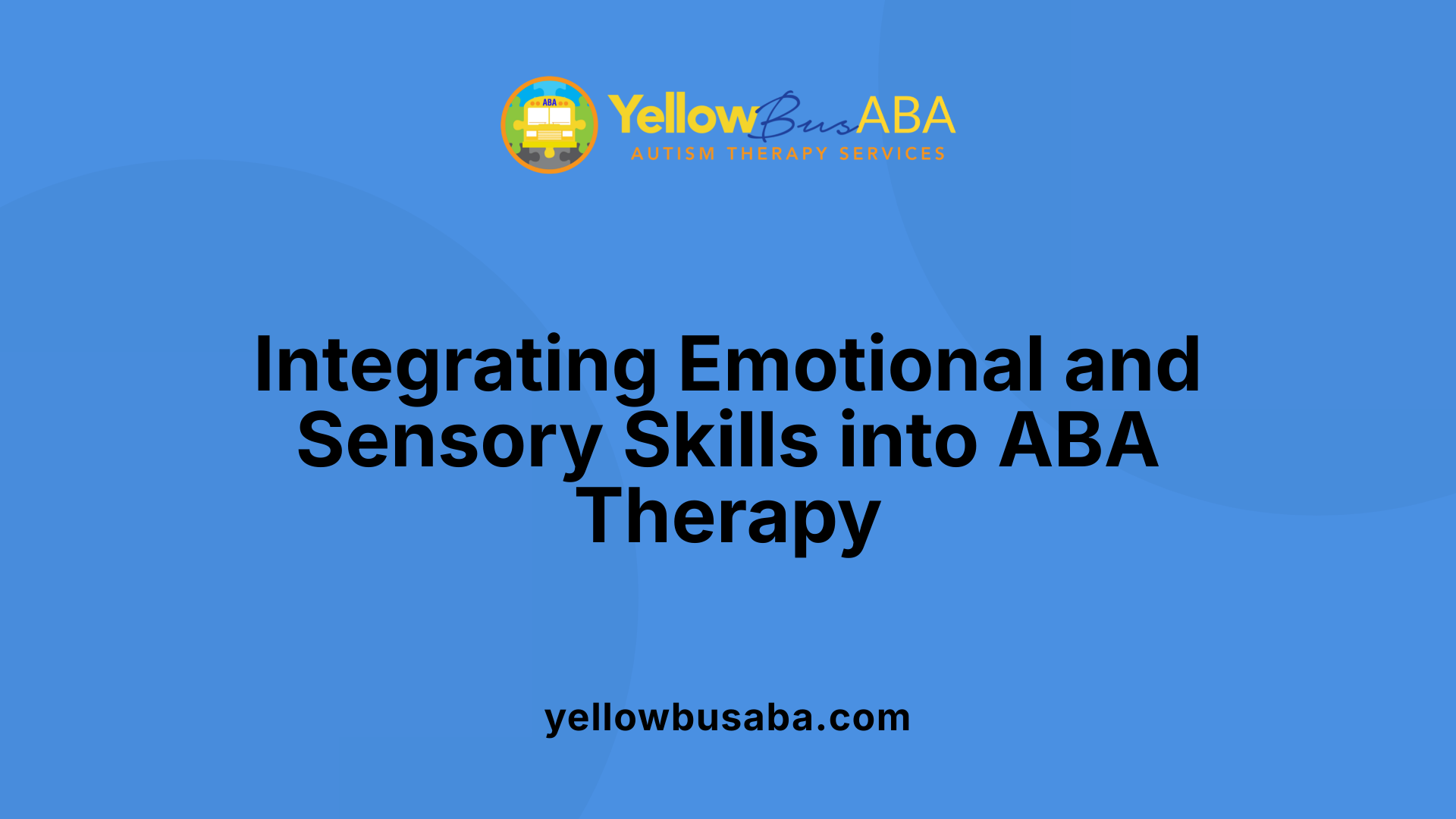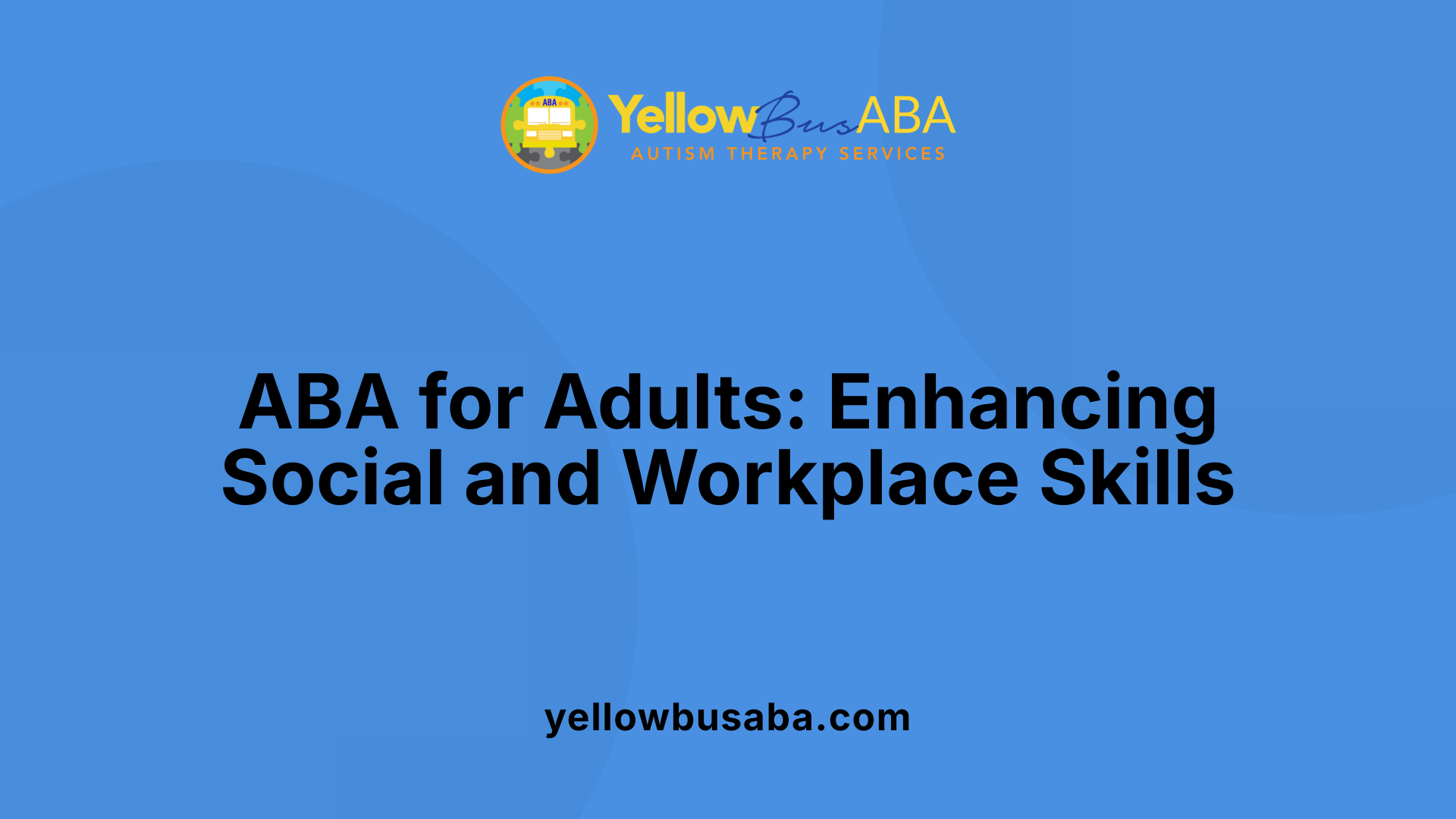How ABA Therapy Helps Children Understand Personal Boundaries
October 21, 2025
Enhancing Social Understanding Through ABA Therapy

Understanding the Role of ABA in Teaching Social Boundaries
Applied Behavior Analysis (ABA) therapy has become a cornerstone intervention in helping children with autism spectrum disorder (ASD) develop crucial social skills, including the understanding and respect of personal boundaries. Through a structured, evidence-based approach, ABA provides children with the tools to navigate social environments more effectively, fostering mutual respect and meaningful connections. This article explores how ABA therapy specifically aids children in grasping the concept of personal space and boundaries, highlighting the techniques, principles, and outcomes associated with this specialized intervention.
What Is ABA Therapy and Who Provides It?

Overview of ABA Therapy
Applied Behavior Analysis (ABA) is a science-based therapy that focuses on understanding and improving behaviors through systematic interventions. It is widely used to support individuals with autism by promoting positive behaviors such as communication and social skills. ABA therapy uses techniques like positive reinforcement to encourage desired behaviors while reducing challenging ones, making it one of the most effective treatments for autism.
Nature of Behavioral Analysis in Autism
ABA therapy analyzes how the environment influences behavior and applies structured, evidence-based methods to modify these behaviors. Individualized treatment plans are created for each person, based on an initial assessment that identifies skill gaps and target goals. Common strategies include discrete trial training (DTT), pivotal response treatment (PRT), and Behavioral Skills Training (BST), all designed to systematically teach skills and support development.
Professionals Providing ABA Therapy
ABA therapy is delivered by qualified and licensed professionals, including Board Certified Behavior Analysts (BCBAs), licensed psychologists, and licensed physicians. These specialists design, supervise, and implement custom programs tailored to individual needs. ABA therapists and trained staff work directly with children and adults in various settings, applying evidence-based procedures to maximize progress.
Settings and Implementation of ABA Programs
ABA services can be offered in homes, schools, clinics, and community environments. Programs are personalized and typically involve consistent, ongoing sessions. Insurance plans like Medi-Cal often cover ABA therapy for eligible children, enhancing accessibility. The emphasis on individualization, consistent data collection, and applied techniques ensures measurable and meaningful progress toward socially significant skills.
Teaching Personal Boundaries Through Structured Methods

Use of Visual Supports
ABA therapy leverages visual supports such as boundary charts, colored tape, and PECS cards to clarify social expectations. These tools provide tangible, predictable references that help children with autism understand the invisible limits of personal space.
Social Stories for Boundary Clarity
Social stories are structured narratives explaining social boundaries and personal space. They describe scenarios children might encounter, detailing appropriate behaviors and responses. By using consistent language conceptualizing boundaries as an 'invisible bubble,' social stories make abstract concepts concrete and relatable.
Role-Playing and Modeling Techniques
Role-playing exercises allow children to practice social interactions and boundary behaviors in controlled, supportive environments. Therapists model appropriate responses, narrate personal space cues during interactions, and employ prompts and scripts. This hands-on rehearsal builds confidence and social skills needed for real-life situations.
Behavioral Skills Training (BST)
ABA programs include Behavioral Skills Training, which systematically teaches social skills through instruction, modeling, rehearsal, and feedback. This method identifies individual social skill gaps, sets personalized goals, and reinforces learning with positive feedback to encourage progress.
These structured ABA interventions offer a comprehensive approach to teaching social boundaries, empowering children with autism to engage in respectful and meaningful social interactions.
The Importance of Positive Reinforcement in Boundary Learning

What Are Positive Reinforcement Principles?
Positive reinforcement in ABA therapy involves encouraging desired behaviors by providing immediate rewards following the behavior. This approach strengthens the likelihood that appropriate boundary behaviors—such as respecting personal space and following social rules—will be repeated by children with autism.
How Does Immediate Feedback Work?
Therapists and caregivers deliver instant feedback when a child exhibits correct boundary behavior. This timely response helps the child clearly connect the positive action with the reward, making it easier to understand social expectations and reducing confusion.
What Are Common Rewards and Token Systems?
ABA therapy uses several types of rewards including praise, tokens, and tangible items. Token systems involve earning points or tokens for appropriate behavior which can later be exchanged for a preferred item or privilege. Visual aids such as charts help track progress and motivate children to continue practicing social boundaries.
Why Does Positive Reinforcement Encourage Repetition and Engagement?
When children receive consistent rewards and positive attention, they are more motivated to engage in boundary-appropriate behaviors repeatedly. This reinforcement builds confidence, makes learning enjoyable, and supports the generalization of skills across different settings, including home and social environments.
Incorporating Emotional and Sensory Awareness in ABA

Teaching Emotional Recognition Related to Boundaries
ABA therapy helps children with autism understand how emotions connect to personal space. By using visual aids like pictures and videos to show facial expressions and body language, therapists teach children to recognize feelings such as discomfort or happiness. This emotional recognition supports better interpretation of social cues and appropriate boundary behaviors.
Sensory Processing Challenges in Autism
Many autistic children experience sensory processing differences that can affect their sense of personal space. Issues with proprioception or heightened sensitivity may make it harder for them to judge distances or tolerate certain social interactions. ABA methods include tailoring lessons to these sensory needs, making boundaries clearer and more comfortable.
Using Calming and Safe Spaces
Designated safe spaces in therapy and at home allow children to practice self-regulation and boundary setting in a supportive environment. These calming areas offer sensory tools and a quiet atmosphere where individuals can regroup, helping them better manage emotions tied to social situations.
Supporting Self-Regulation in Social Interactions
ABA therapy incorporates strategies such as relaxation techniques and self-talk to help children handle social anxiety and boundary challenges. Consistent positive reinforcement encourages use of these skills, fostering confidence and smoother social experiences.
Together, these approaches enrich ABA therapy by linking emotional and sensory awareness with practical boundary skills, promoting stronger social understanding and comfort for children with autism.
Generalization and Consistency: Reinforcing Lessons Beyond Therapy

Role of Family and Caregivers
Family members and caregivers play a crucial role in extending the impact of ABA therapy beyond clinical sessions. Their involvement ensures that children experience consistency in language, expectations, and routines related to social boundaries. By reinforcing the same behavioral cues and positive reinforcement strategies used in therapy, caregivers help children transfer learned skills into everyday interactions.
Consistent Language and Visual Cues at Home
ABA therapy emphasizes the use of consistent language paired with visual supports like boundary charts and social stories. When these tools are maintained at home, they create a predictable and clear framework that children with autism can rely on. For example, using the "invisible bubble" concept or maintaining visual aids such as PECS cards helps solidify understanding and encourages practice of appropriate personal space and boundary recognition.
Collaborative Community Education
Building awareness about personal space and social boundaries involves educating not only the child but also the broader community. Collaborative efforts among therapists, families, schools, and peers foster inclusive environments where expectations are understood and respected. Such community education can reduce misunderstandings and provide supportive social settings that enable autistic individuals to thrive.
Extending Social Boundary Skills to Digital Environments
With increased interaction in online spaces, ABA therapy now incorporates teaching social boundaries in digital contexts such as social media and online communication. Lessons focus on understanding privacy, appropriate digital etiquette, and recognizing boundaries in virtual interactions. These adaptations prepare individuals with autism to navigate both real-world and virtual social landscapes responsibly and respectfully.
Group and Peer-Based ABA Approaches for Social Boundary Mastery

What are the Benefits of Group Therapy in ABA?
Group therapy settings in ABA create a supportive atmosphere where children with autism can learn and practice social boundaries alongside peers. This environment encourages natural social interactions and fosters mutual learning under the supervision of therapists.
How Does Peer Interaction and Collaborative Play Enhance Learning?
Interacting with peers during collaborative play helps children experience real-life social dynamics. These sessions provide opportunities to practice sharing, turn-taking, and respecting personal space in an enjoyable and engaging way.
How is Role-Playing with Peers Incorporated?
Role-playing activities involving peers allow children to rehearse social scenarios, recognize social cues, and practice appropriate responses. Using aids, prompts, and scripts, therapists guide children through these exercises to build confidence and understanding.
Why Practice in Real-Time Social Situations?
Practicing social boundaries in real-time situations helps generalize the skills children acquire. Immediate feedback and positive reinforcement from therapists during these moments help solidify appropriate behaviors and encourage ongoing use of social boundaries.
The combination of group sessions, peer interaction, and role-play within ABA therapy equips children with autism with essential social boundary skills in naturalistic settings, promoting lasting social competence.
Advanced ABA Applications: Beyond Childhood

How is ABA adapted for adults with autism?
ABA therapy extends beyond childhood by tailoring techniques to address the unique social challenges adults with autism face. For adults, ABA focuses on real-world scenarios like workplace etiquette, maintaining friendships, and respecting privacy. This adaptation includes personalized goals reflecting adult social roles and responsibilities.
What social skills are taught related to workplace etiquette and friendship boundaries?
In workplace settings, ABA helps adults with autism learn appropriate communication, understand professional boundaries, and practice cooperation with colleagues. Friendship boundaries, another focus, involve recognizing cues related to personal space, emotional sharing, and respecting others’ limits to foster meaningful relationships.
How does ABA promote privacy and mutual respect?
Teaching privacy boundaries involves helping adults recognize situations requiring discretion and personal space, encouraging empathy and trust. Therapists use consistent language, role-playing, and positive reinforcement to cultivate respect for self and others, promoting healthier social interactions and autonomy.
How is progress measured and goals individualized in ABA programs for adults?
Progress is tracked through individualized goal setting after thorough assessments. Structured programs use behavioral skills training to systematically teach and reinforce social skills. Measurements are often quantitative—like frequency of appropriate interactions—and qualitative, such as increased confidence and independence in social settings.
Building Respectful Social Connections Through ABA
ABA therapy offers a scientifically grounded path for children with autism to understand and respect personal boundaries, a foundational element of healthy social interaction. By combining structured teaching methods, positive reinforcement, emotional awareness, and consistent practice across settings, ABA helps bridge social communication gaps. With support from qualified professionals and the active involvement of families and communities, children can internalize these skills early, fostering autonomy, empathy, and confidence. As ABA techniques continue to evolve, their adaptation into group settings and adult lives further emphasizes the therapy's profound capacity to promote meaningful, respectful relationships across the lifespan.
References
- Helping Children with Autism Build Better Relationships
- ABA therapy enhances Social Skills
- Teaching Personal Space to Autistic Children
- Strategies for Teaching Boundaries Autism -
- Applied Behavior Analysis (ABA)
- Treatment and Intervention for Autism Spectrum Disorder
- Behavioral Management Therapy for Autism | NICHD
- Applied Behavior Analysis (ABA)
- Applied Behavior Analysis (ABA)
- Behavioral Health Treatment | Children with Autism Spectrum ...






